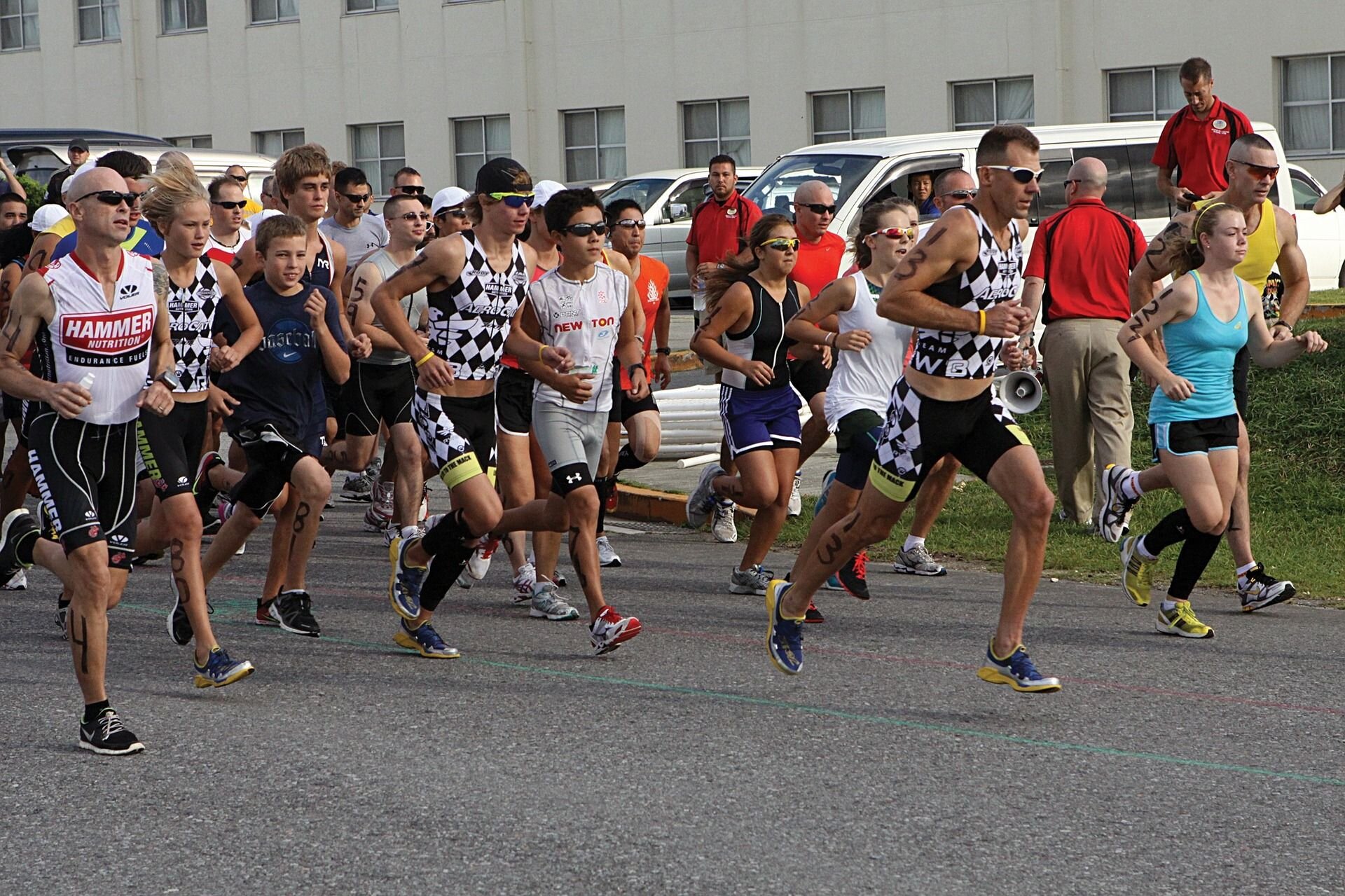A Beginner’s Guide to Start Running
Join the Wild Free Organic email newsletter!
Getting out the door is more than half the battle when it comes to starting to run. Irregular and demanding work schedules, kids, and other commitments make it difficult to commit consistent time to running. On top of that, we’ve lost count of the people who say they are frustrated, because they have constantly been disappointed with their lack of progress—running never seems to get any easier.
The key to overcoming all of these obstacles?
Facing them with a solid plan of attack!
Raceday! From experts to beginners, anyone can participate in a 5k and compete against themselves.
Wild Free Organic Running Series:
Beginners Running Guide - 3 Month Plan ✅
From running novice to experienced racer, you’ll learn running, strength training, and race tip from these articles written by Triathlete Sarah Alexander and Physician Carten Denne. For absolute beginners, start with the Beginners Running Guide and follow through the other articles as you prepare for your first 5k race!
There are more training plans out there than we can count, but only a handful that truly seek to guide someone who has been inactive for months or years and wants to be able to run a 5k straight through. One of these is the “Couch to 5k” running plan (C25k), which has helped thousands go from a sedentary lifestyle to completing their first 5k. It provides a progression of walk-runs over nine weeks that builds up to 30 minutes of straight running. While C25k is a great program, and we love the functionality and ease of its app, there are a few critical ways in which the training program falls short:
Weekly Strength & Mobility
Running is stressful on the body. Particularly when people are just getting started, they tend to not have the lower body strength needed for the demands of running, which makes them vulnerable to injuries like shin splints, achilles tendinitis, IT band syndrome and plantar fasciitis as a result. Staying injury free during the first few weeks of running is crucial.
Committing to 20-30 minutes of strength training 1-2x per week just as a start will do wonders to build strength and prevent injury. Further benefits of strength training include burning fat and building muscle. Improved body composition will help you run further and faster with less effort.
Incorporate strength training into your running routine to see the benefits!
For the aforementioned reasons, we include one strength/mobility session per week in the zero to 5k program below. This 7-minute strength workout is a great one and can be done at home with no equipment!
Time, Not Distance
While the Couch to 5k plan lets the individual choose whether to run for time or distance. However, when running for distance, people often feel pressure to cover a certain distance in a certain time. For beginner runners in particular, this can lead to over-exertion and bad running from habits which can result in injury, less enjoyment, or both. Plus, having a reliable amount of time for a run session will make it easier to plan ahead and incorporate running into your schedule.
12 Weeks for Gradual Progression
It takes time for both mind and body to adapt to running. While the Couch to 5k program says to repeat weeks if needed, it can be hard to alter a plan and can even feel like a “failure.” For that reason, we have extended the plan from nine weeks to twelve, giving runners a clean three months to prepare for their 5k. This slightly more conservative approach will decrease the chance of injury and allow for more enjoyment along the way.
There are still some weeks that might seem like a big jump, particularly the jump from wk10 to wk11, which removes walking breaks. The key on week 11 is to remember that you have built up the strength and endurance necessary to make this leap, especially since the overall volume decreases a bit. Focus on the decreased total workout time as opposed to the increase in continuous running—it’s more of a mental leap than a physical one, we promise!
Our “Make a Run For It” Beginner’s Training Plan integrates some of the great foundational aspects of C25k with the changes made above:
“Make a Run For It” Beginner’s Training Plan - Sarah Alexander
As you embark on the training program above, keep these five pro tips in mind to guide you through the peaks and valleys of running and empower you to run a 5k straight through:
1) Plan Ahead
In terms of your macro schedule, plan your weeks in advance. Obviously things may change along the way, but having a blueprint for your week will help as you learn to integrate running into your life. It is best to space out runs with rest days in between, but what works for one person won’t work for another, so we leave the scheduling of sessions up to you. Consider M/W/F/Sa or T/Th/Sa/Su, but at the end of the day, commit to the schedule that best fits the demands of your life.
On the day to day, try to make running the first thing you do in the morning, before life has a chance to get in the way. Make running your you time. Setting the alarm 40 minutes earlier than normal might seem painful, but you can make things easier on yourself by setting out your gear and placing your shoes right next to the door the night before. Wake up, get up, and go.
“You are the master of your schedule, but no matter how well intentioned we are, something gets in the way! Give yourself the best chance of successfully completing each session by planning ahead.”
That said, some people are just not early birds. If you prefer to train after work, pack running clothes to change into right at the end of the day. Also consider setting a “workout meeting” on your calendar to hold you to your workouts. The most important thing is to be consistent from session to session and week to week.
2) Bring an accountability partner (or many) on board
As you build the habit of running, you need to make the pain of skipping your run greater than the pain of doing it. Have somebody that trains with you, or who you tell about your training, so you can check in with them each session. Ideally, talk a friend or family member into starting the program with you so you’re both starting from the same level!
Have an accountability buddy, or run with a buddy!
In addition, consider joining a running club. Many companies, local running stores, and local communities have running clubs, which are great resources as you build your habit of running. While you have your accountability partner in place, the more people you surround yourself with who are doing the things you want to do, the better.
Not only can these resources serve as extra motivation to hit the pavement, but they can also help you become a better runner. Remember the golden rule of 5: you are the average of the five people you associate most with. So associate with faster, more experienced, healthy runners. Don’t have an in-person running community in your area? No stress, there are a lot of online running communities that can help as well. Before you know it, you will have built enough momentum that you might even become someone else’s accountability buddy!
3) Warm up before, stretch after
Doing a dynamic warm-up can take less than 5 minutes and will help you feel better from your first minute of walking. It will also decrease your chance of injury. After your run is the time to do some light stretching. I always think of post-workout stretching to be like a glass of cool lemonade on a hot day—it’s a chance to not only restore my muscles, but also take some deep breaths and soak in the training session I just accomplished. Carving out a few extra minutes before and after each session can feel strange, but properly warming up and cooling down will without a doubt put you in a better place physically and mentally going into the next workout that week.
4) Keep a Running Journal
Journaling is a great way to embrace the opportunity for personal growth that comes with any running journey. Tracking your progress will also help you keep track of your progression and keep things in perspective when you’re having a hard time getting through a training week. On top of that, it’s a great way to notice how running is changing your life without having to try too hard—feeling less stressed or in a better mood? Finding changes in food cravings and appetite? Experiencing more confidence? Jot it down! It will be fun to look back on your observations at the end of the three months.
You can also use your log to track your eating if you are running for weight loss. Changing your diet will be a key component to shedding pounds in addition to increased physical activity. Keeping a log—either written or digital—will help you stick with new healthy snacks, take note of what’s working and what’s not, and monitor your energy intake/expenditure.
5) Keep Running Fun!
When training for an event, you will inevitably face a time when you have to dig down deep to find motivation; there will be days when you don’t want to run. A good way to find that motivation on days when it’s lacking is by packing a fun outfit you’ve been wanting to wear, creating a new running playlist, or downloading that interesting new podcast you’ve been wanting to listen to!
A couple great playlists to check out on Spotify are 170-190 BPM: Hip Hop Playlist and 170-190 Rock Playlist. Not only do these playlists include some great tunes, but they all have tempos that you can run to in order to practice good cadence (strive to hold ~180 strides per minute to reduce chances of injury and improve running economy).
Thirty Minutes and an Open Door are all it takes
As you integrate activity back into your life and embark on your running journey, keep these tips in mind, and let us know how they are working for you! Stay focused on your end goal but remember to have fun with your training and enjoy the process, as well. What’s important in this journey is that you finish what you started—that in itself is a huge accomplishment, and you will make lasting memories and change your life in the process.
Wild Free Organic recommends Vivobarefoot footwear - modern footwear made with natural human physiology, minimalism, and eco-conscious in mind. Vivobarefoot has zero-drop, wide toe-box shoes that can be used from the office to the gym to the tundra, and everything in-between.
Sarah Alexander
Since graduating from Chicago Booth with her MBA in 2015, Sarah has competed for the U.S.A. as a professional triathlete. In the process, she has become an expert in fitness and nutrition. She is passionate about helping others achieve their goals and is motivated by the perpetual challenge of defying boundaries to discover her best in athletic and professional pursuits alike.
To learn more about Sarah Alexander visit her website or follow her on Instagram @sarah_alxndr.





